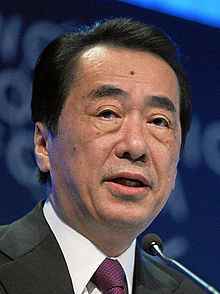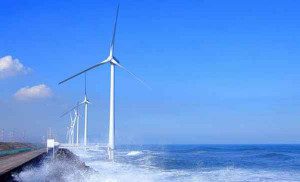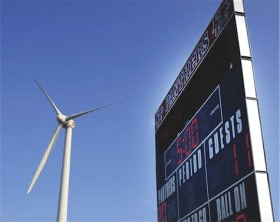By Colin Houghton, August 29, 2011
Japan’s parliament is about to approve an historic bill on renewable energy. It hat was championed by Prime Minister Naoto Kan as a way to reduce the nation’s unhealthy dependence on nuclear power. The Bill should be enacted in the next few weeks. Unsurprisingly, the Fukushima nuclear disaster boosted the prospects for the bill becoming law astronomically. There was little hope for its success before the accident.
In essence the law will require that Japanese Utilities must purchase power from renewable energy power generators, and at a price fixed by the country’s Industry Minister. It is hoped that the law will open the door for Japan to make greater use of alternative energy sources, including wind power.
The Prime Minister predicted that the legislation would spark “explosive growth” in solar and wind power. He made a commitment to raise the share of renewable energy to at least 20% of total power supply by early 2020s. Mr Kan has made considerable personal efforts to make the Bill law, which it is claimed was inspired by a visit to a wind farm in Denver, Colorado, United States, over 30 years ago!

Hideaki Matsui, senior researcher with the Japan Research Institute, pointed to the potentiality of wind power generation. “Wind energy, including offshore wind farm plants, have the most potential of any renewable energy source,” he said. “However, the government needs to show a clear goal if it wants such wind power generation to spread.”
Despite the groundswell in opinion away from nuclear power, there is a possibility that the law will lack teeth because electric power companies will still be allowed to reject purchases of electricity generated through natural energy, such as solar power and wind power.
There will also be other challenges to using wind power, such as connecting a large number of renewable-power generators to the grid. Upgrading the grid is expected to take time and cost up to ¥2 trillion ($26 billion), according to the Ministry of Economy, Trade and Industry. To increase the amount of electricity generated by wind power generators, the power grid to transmit electricity to big cities needs to be reinforced. At present, wind power generation accounts for only 0.5 percent of electric power generated in Japan. Most of such generators are concentrated in areas along coasts and mountains in the Tohoku, Hokkaido and Kyushu regions.
Off-shore and semi-off-shore based wind power generators such as this one at will need to be made typhoon-resistant, which will be costly. In addition, fishing rights over areas where the generators might be built could pose a challenge.
Finally, just as one law supporting renewable energy is about to come in, another, under which the government bore one-third of the costs of building wind power plants, was abolished last year.
However the mood of the pro-wind lobby is optimistic, and there’s no denying that the enactment of the new law will bring a welcome focus to the opportunities of harnessing wind power in Japan and reducing reliance on nuclear power.




I understand there is a company (Hyperion) in New Mexico that makes a self-moderating nuclear heat source the size of a hot tub that when coupled to a steam turbine can power 20,000 homes; and because of the self moderating property is said to be “totally” safe. If these claims are real, why not use them? Why build an expensive grid? All problems become local and isolated.